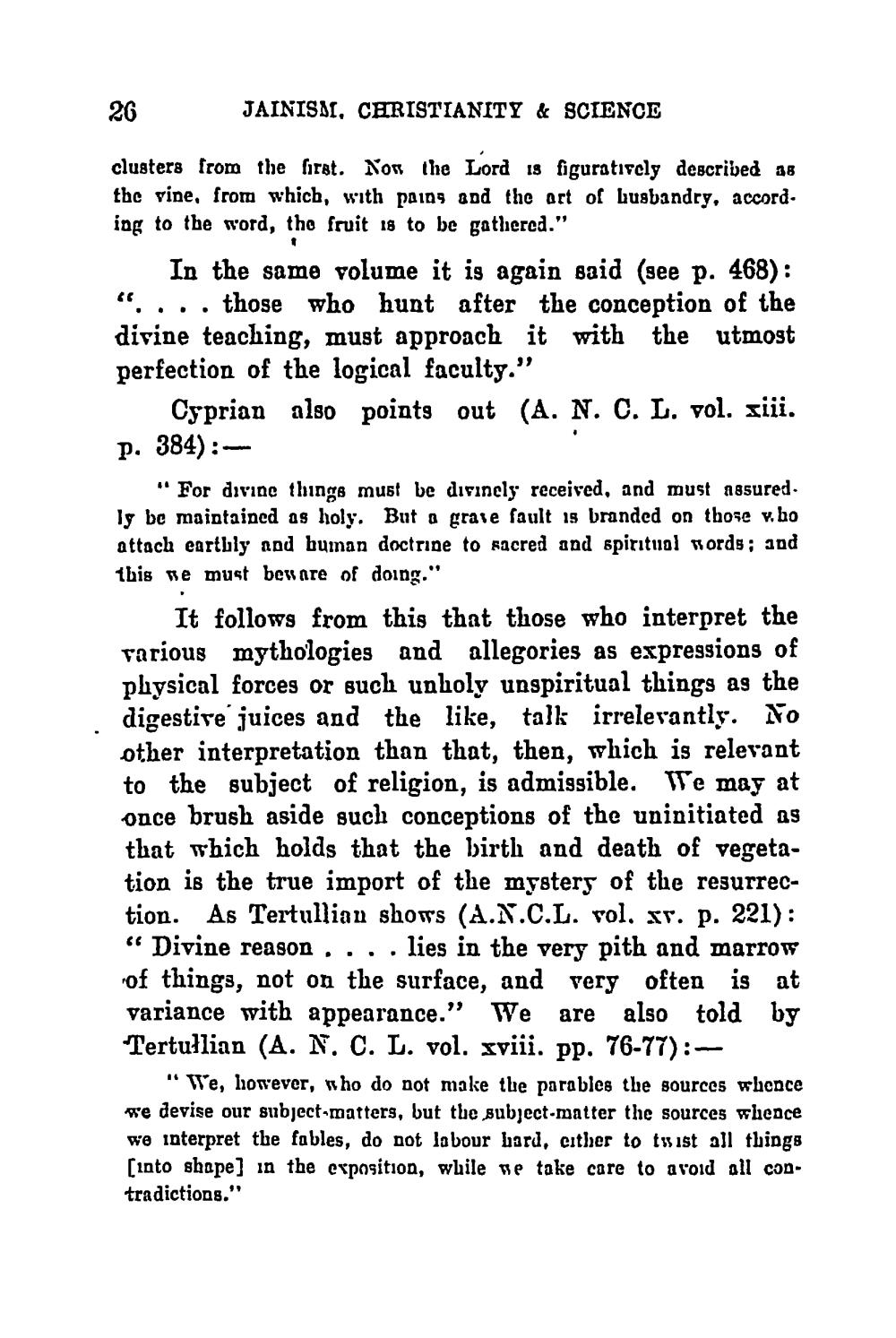________________
26
JAINISM, CHRISTIANITY & SCIENCE
clusters from the first. Nor the Lord is figuratively described as the vine, from which, with poing and the art of Lusbandry, accord. ing to the word, the fruit is to be gathered."
In the same volume it is again said (see p. 468): ".... those who hunt after the conception of the divine teaching, must approach it with the utmost perfection of the logical faculty.”.
Cyprian also points out (A. N. C. L. vol. xiii. p. 384):--
"For diving things must be difinely received, and must assured. ly be maintained as holy. But a grase fault is branded on those who attach earthly and human doctrine to sacred and spiritual words; and this we must beware of doing."
It follows from this that those who interpret the various mythologies and allegories as expressions of physical forces or such unholy unspiritual things as the digestive juices and the like, talk irrelevantly. To other interpretation than that, then, which is relevant to the subject of religion, is admissible. We may at once brush aside such conceptions of the uninitiated as that which holds that the birth and death of vegetation is the true import of the mystery of the resurrection. As Tertullian shots (A.N.C.L. vol. fr. p. 221): “ Divine reason . . . . lies in the very pith and marrow of things, not on the surface, and very often is at variance with appearance." We are also told by Tertullian (A. N. C. L. vol. xviii. pp. 76-77):
“We, however, who do not make the parables the sources whence We devise our subject matters, but the subject-matter the sources whence we interpret the fables, do not labour bard, cither to tsist all things (into shape) in the exposition, while we take care to avoid all contradictions."




